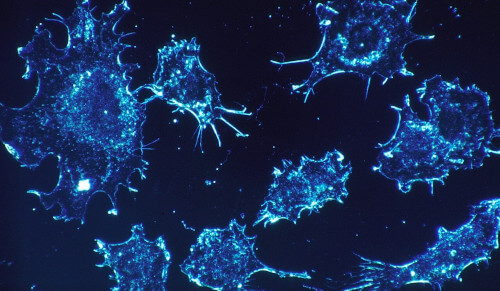What does biocompatibility mean?
The definition provides the following information: “Ability of a medical device or material to perform with an appropriate host response in a specific application [ISO 10993-1]”. Sounds too complicated? We think so too.
A host response could be skin irritations, for example. Generally speaking, these are undesirable reactions / side effects.
Biocompatibility thus describes the ability of a medical device or material to function according to its intended purpose while causing only acceptable levels of undesirable reactions in the human body.
A biocompatible material is well-tolerated by the human body.
Medical device context
Medical devices are often touched directly or indirectly by users or patients. This should not lead to inappropriate side effects due to an incompatible material. To ensure this, materials and medical devices are tested for their biocompatibility.
- Direct contact:
- The user touches the device during use
- The patient is touched by the device during use – a plaster sticks to the patient’s skin
- Indirect contact:
- The patient is injected with a liquid. The liquid was previously in a syringe. Since the liquid was in the syringe, the patient indirectly comes into contact with the inside of the syringe

Proof of Biocompatibility
Proof can be provided, for example, through biological tests and by assessing the effects of extractable chemicals. Additionally, other material properties such as bound chemicals and the ability to maintain mechanical integrity can be tested – if this can have an impact on the biological response of the body in contact with the product.
Such tests are carried out by specialized laboratories and sometimes involve animal testing. To reduce the number of animal experiments, attempts are often made to prove the biocompatibility of materials based on existing data. The extent to which this is possible must be examined on a case-by-case basis. Additionally, ISO 10993-1 states that in vitro tests should be preferred over in vivo tests if they are sufficiently reliable. So even at the level of this standard, there is an indication that unnecessary animal testing should be avoided.
What are the Difficulties?
Often, it’s not the materials of the medical devices that are the problem. Residues that can remain on the device during manufacturing, sterilization, or from other sources can also be critical. These substances must be identified and, if necessary, eliminated if they are not biocompatible.
Additionally, there are many different ways in which the human body can react to an incompatible material. Some of these occur very quickly, others are delayed. Skin irritation will be noticed quickly. An adverse effect on reproductive ability or hormone balance, on the other hand, is more difficult to notice and appears later.
To cover all aspects of biocompatibility, there is a whole series of different standards from the ISO 10993 series. Depending on the device and its intended purpose, it must be checked which of these standards are applicable.
Do all medical devices Have to be biocompatible?
ISO 10993-1 contains a diagram with various questions to complete the biological evaluation and thus determine biocompatibility. The first question aims at whether there is direct or indirect patient contact. If this is denied, ISO 10993-1 is not applicable.
However, the MDR requires that products should be designed to ensure the safety of users as well. This also includes aspects of biocompatibility, as users often have direct contact with a medical device when using it.
Where can I get support in proving biocompatibility?
We can create the biological evaluation according to DIN EN ISO 10993-1:2021 for you. In this context, all existing data on aspects of biocompatibility of your product are identified and we derive from this whether or which tests are still necessary. With a biological evaluation created in this way and a traceable derivation for or against conducting tests, you are optimally positioned for a review by your notified body.
